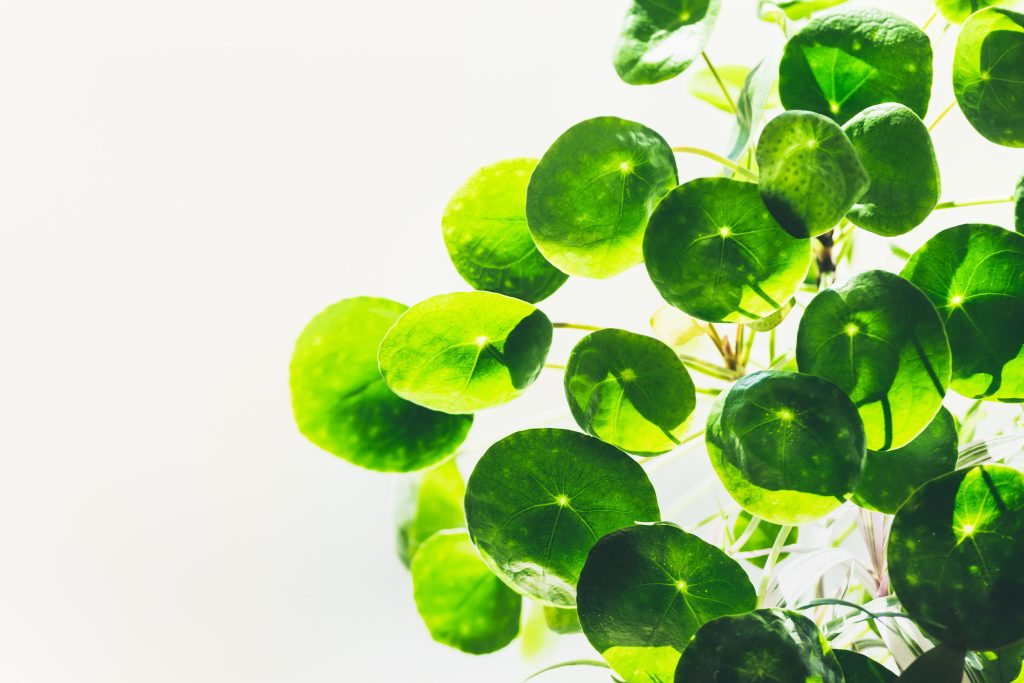Native to Southern China, there are over 600 species of Pilea. One the most commonly recognised variants is Pilea Peperomioides, also known as Chinese Money Plants. The Pilea Peperomioides display round, flat leaves that resemble coins, hence the ‘money’ in their nickname. Another popular Pilea is the Pilea Cadierei- aka the Aluminium Plant- which is characterized by the metallic silver quilted patterns on its oval-shaped leaves. The foliage of Pilea varies considerably throughout the genus. These moderate to fast growers produce large quantities of pups. Pileas are non-toxic to people and animals.
Pilea thrive in bright, indirect sunlight and can adapt to low light conditions.
Water with filtered or rain water when soil is 75%- 85% dry. Another way to tell if your Pilea is ready to be watered is to feel the leaves. If the leaves are thin and soft, it’s ready to be watered; if they are thick and hard, leave it be for the moment.
Pilea will do best in temperatures between 60-75°F, and in environments with humidity between 50%-70%.
Pilea produce a large quantity of pups, making division a great way to propagate these plants. Allow pups to develop an adequate root system, the separate and replant. They can also be propagated by stem cutting- simply snip and place in water!
Curing is most likely a symptom of improper watering. If the leaves are yellow and drooping, it could be a sign of overwatering. If leaves are curling upward, it could be due to too much sun/heat or underwatering. Pilea leaves are supposed to be flat! Drooping can also be a sign of underwatering- underwatered Pileas can look similar to overwatered Pileas. If the leaves are regularly colored and shaped, and only the leaf stems are drooping, then your pilea is probably in need of some water. Check a few inches into the soil to diagnose the problem.
If your Pilea is displaying small white dots, about the size of a grain of salt, but healthy otherwise, there is nothing to worry about! These spots are mineral deposits developed as the plant photosynthesizes. If you want the dots to go away, try watering your Pilea with only filtered water or natural rainwater. Alternatively, if the spots are brown or yellow and larger, it might be a sign of root rot.
